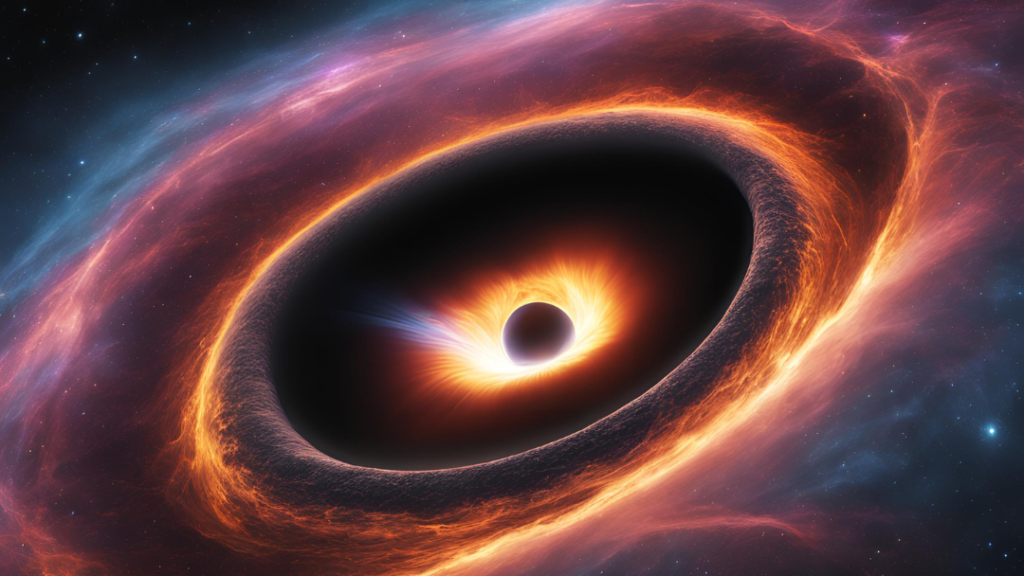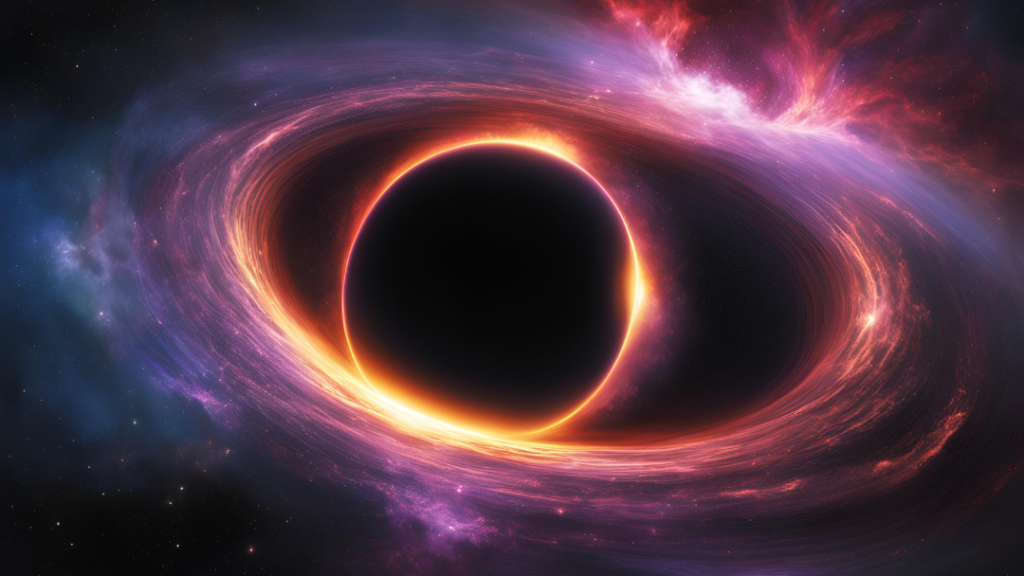What is a Black Hole?
what exactly is a Black hole ? Imagine a region in space where gravity is so powerful that nothing, not even light, can escape its pull. This incredible force is due to a huge amount of matter being squeezed into a tiny space
Think of it like this: If you were to compress all the mass of a massive star into a very small area, you’d get a black-hole. At the core of a black-hole is something called a singularity, a point of infinite density where our understanding of physics breaks down. Surrounding this singularity is the event horizon—the point beyond which nothing can return.

Types of Black Holes
Black-holes aren’t all the same—they come in different types, each with its own characteristics. Let’s break them down.
- Stellar Black Holes:
These form when massive stars reach the end of their life cycle and collapse under their own gravity. They usually have masses between 3 and 10 times that of our Sun. - Supermassive Black Holes:
Found at the centers of most galaxies, including our Milky Way, these giants have masses ranging from hundreds of thousands to billions of solar masses. Their origins are still a big mystery. - Intermediate Black Holes:
These are theorized to have masses between stellar and supermassive black-holes. They’re harder to detect and still a topic of active research.
How Do Black Holes Form?
Black holes form in various ways. Stellar black-holes are created when massive stars run out of fuel and collapse. Supermassive black holes might form through the merging of smaller black holes or by accumulating vast amounts of matter over time.
Here’s how it works: When a massive star exhausts its nuclear fuel, it can’t support itself against gravity anymore. The core collapses, and if it’s massive enough, it turns into a black-hole.
For supermassive black-holes, their formation is still being studied. Some theories suggest they form from the merging of smaller black-holes or from massive gas clouds collapsing directly in the early universe.
The Event Horizon and Singularity
The event horizon is the point around a black-hole where gravity is so strong that not even light can escape. Beyond this boundary, space and time are distorted in ways we can barely understand.
At the very center of a black-hole is the singularity, where matter is crushed to infinite density. It’s a place where our current understanding of physics breaks down, and figuring it out could lead to new breakthroughs in science.
Black Holes and Time Dilation
One of the most mind-boggling effects of black holes is time dilation. According to Einstein’s theory of relativity, time moves slower in stronger gravitational fields.
If you were to approach a black-hole, you’d experience time much differently from someone far away. To an outside observer, it would look like you’re slowing down and eventually freezing as you near the event horizon. It’s like the universe’s way of showing how gravity affects time.
Observing Black Holes

Even though black-holes themselves are invisible, we can detect them through their influence on nearby matter. As matter falls into a black hole, it heats up and emits X-rays and other forms of radiation, which we can observe with telescopes.
One of the biggest achievements in recent years was the Event Horizon Telescope capturing the first image of a black-hole in the galaxy M87. This was a major milestone in astronomy, confirming the presence of the event horizon and giving us a glimpse into the heart of these cosmic giants.
Black Holes and the Universe
Black-holes play a significant role in the structure and evolution of galaxies. Supermassive black holes at the centers of galaxies influence how stars and gas move within their host galaxies.
They’re not just cosmic curiosities; they affect the motion of stars and the dynamics of entire galaxies. Through phenomena like active galactic nuclei and quasars, black-holes can shape the formation and evolution of galaxies by emitting powerful jets and radiation.
The Future of Black Hole Research
The study of black-holes is a dynamic and exciting field. With advancements in technology, new missions and observatories are on the horizon, aiming to unlock more secrets of these cosmic enigmas.
Future research will continue to push the boundaries of our knowledge. We might soon detect gravitational waves from black hole mergers, explore black hole evaporation through Hawking radiation, and seek new insights into quantum gravity.
[Conclusion]
Black-holes are one of the universe’s most intriguing and mysterious phenomena. Their study challenges our understanding of the cosmos and offers a window into the fundamental workings of the universe.
Exploring the Mysteries of Wormholes: What They Are and Why They Fascinate Us


1 thought on “The Mysterious World of Black Holes: What We Know So Far”